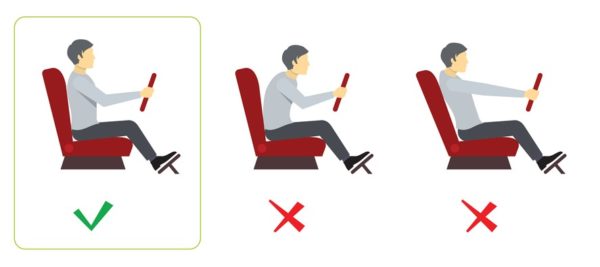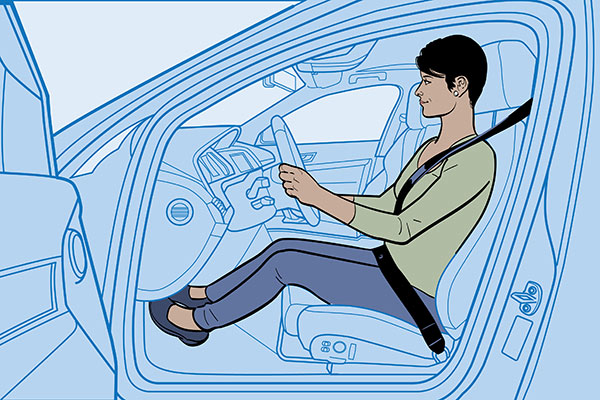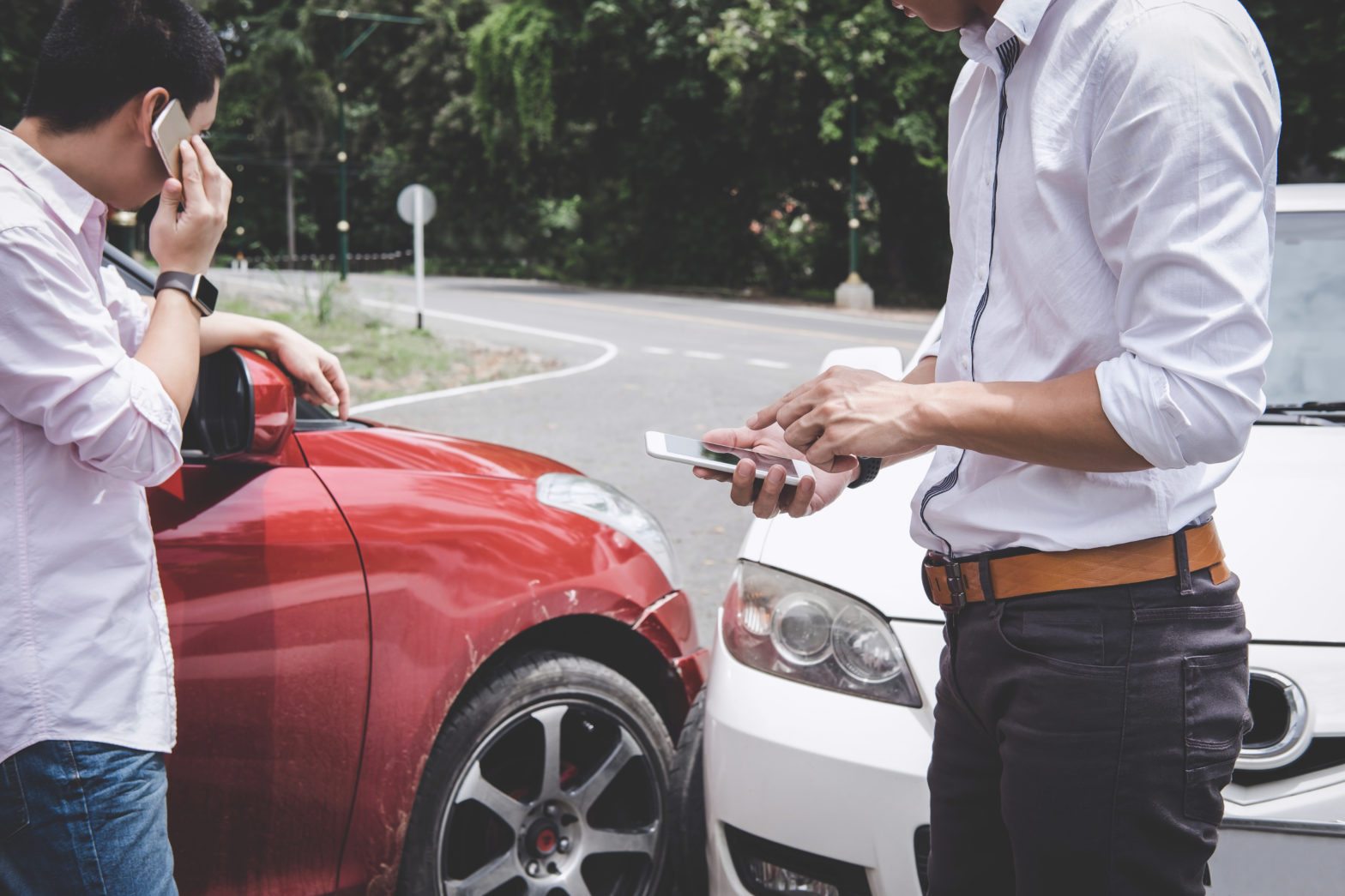An achy back, stiff neck, sore shoulders: The everyday shakes, rattles and rolls of daily commuting can take a toll on your body.
The vehicles we drive are part of the problem. Some car seats don’t adequately accommodate the curve of the lower back, putting additional strain on the spine. And compact cars may lack legroom and head space, forcing some drivers to contort their bodies into unhealthy positions just to operate the vehicle.
But it’s not always the car’s fault, says Dr. Ginger Edgecombe Dorsey, Ph.D., Ergonomics Program Manager for the USDA Animal and Plant Health Inspection Service (APHIS). Sometimes the problem is simply how we sit. In her ongoing poll of USDA employees, she finds that poor driving posture can lead to an increased risk of discomfort in the neck, back, shoulders, arms, wrists, fingers, legs and feet. Over time, she says, bad posture could result in chronic pain, making you vulnerable to more injuries.
And sore limbs may be the least of it: One study found that poorly positioned drivers also have an increased risk of serious injury if they get into an accident.
Fortunately, you can alleviate many posture-related discomforts with proper adjustment of the driver’s seat and mirrors. Here’s what Dorsey recommends.
 1. Support Your Back
1. Support Your Back
Slide your tailbone as close to the seat back as possible. Aim for a two- to three-finger gap between the back of your knees and the front of your seat. If your vehicle doesn’t allow for the proper position, a lumbar or back cushion may help.
2. Lift Your Hips
If you can, adjust your “seat pan” (the part you sit on) so that your thighs are supported along their entire length and your knees are slightly lower than your hips. This will increase circulation to your back while opening up your hips.
3. Don’t Sit Too Close
You should be able to comfortably reach the pedals and press them through their full range with your entire foot. Safety is also a consideration here; this study suggested that drivers whose chests were closer to the wheel were significantly more likely to suffer severe injuries to the head, neck and chest in front- and rear-end collisions.
4. Get The Right Height
Make sure your seat raises your eye level at least three inches above the steering wheel while allowing sufficient clearance between your head and the roof.
5. Lean Back (A Little)
The angle of your seat back should be a little greater than a perpendicular 90 degrees. At 100 to 110 degrees, the seat will put the least pressure on your back. Leaning too far back forces you to push your head and neck forward, which can cause neck and shoulder pain and tingling in the fingers.
6. Set Your Headrest
Set the top of the headrest between the top of your ears and the top of your head; it should just touch the back of your head when you’re sitting comfortably. The headrest is also important in reducing whiplash injuries in the event of a rear-end collision, says NHTSA—so important, in fact, that standards were developed for it.
7. Use Lumbar Support
If your car has adjustable lumbar support, set it (using both the front-back and up-down controls) so you feel an even pressure from your hips to your shoulders. If your car doesn’t have automatic support, a lumbar pillow or even a rolled-up towel can help.
8. Adjust Your Mirrors
Prevent neck strain by making sure your rear-view and side mirrors are properly adjusted; you should be able to see the traffic behind you without having to crane your neck.
9. Take Breaks
Even when you’re perfectly situated in the driver’s seat, fatigue will inevitably set in, especially when you’re driving for long periods. Listen to your body. And take periodic breaks: Park safely at a rest stop or other designated stopping area to get out of the car and stretch.
Managing your auto insurance policy shouldn’t be a pain in the neck. See why GEICO Mobile was ranked #1 by the Keynova Group’s Mobile Insurance Scorecard for 5 years running and download the app today.
Read more: Everything you need to know about distracted driving.
By Robert Edbrooke









anthony nash says,
thank you this is very helpful
Naria Della Maggiora says,
Very helpful tips Thank you Love it!!
Lui says,
I will fallow those advice. Thank you geico
William Mills says,
This was very informative
Aa Angeles Salgado Agrait says,
Thanks for the good safety tips.
Connie (Bynum) Ambush says,
Thank you for those safety tips.
Dianne Hicks says,
Car seating position article very helpful. Thank you.
Dr Jett Gurman says,
As a posture health specialist I suggest that for anyone who commutes or drives long miles, you must take brakes. Get out of the car , move around, do some specific stretches and when In the car change seat positions every 45min min so as to, not lock into postures that result in needing a crain to get you out of the car.
Most people who have neck or back issues of course are advised to simply get checked by a Doctor of Chiropractic as no other health care provider has the specific training to know who is a chiropractic candidate or not. Medical training is about treating symptoms, pills, shots, therapies. chiropractic is about correcting cause, spinal misalignment resulting in abnormal nerve functionality by specific chiropractic spinal adjustment that only a Doctor of Chiropractic is educated and trained to provide. It is not medical it is not Physical Therapy. Chiropractic provides what no other profession does, correction of the fundamental underlying cause of many health issues, Spinal Subluxations. Don’t be fooled that treating the symptoms is correcting the cause.
Mary Lane says,
Dr. Gurman,
I hope you meant “take breaks”. Brakes stop the car; breaks stop road fatigue. Otherwise great advice.
Vanessa says,
Thanks Geico you’re always the best. I loved how people can count on you guys all the time. You have more than 5stars from me
Bonita R Schall says,
Thanks, some very helpful info for very short people.
Rachel says,
I feel like this article was written for short people. What about the average height and tall people…what advice do you have for us?
Solangel C Miranda says,
I have a problem with leaning back. I always drive upright.
Thanks for the tips,
Sara Ansong says,
Thanks Geico ! this information demonstrates that your organization cares about the safety and well- being of its customers. The information you provided was very helpful, informative, and educational. I am impressed and feel special.
CHARLES I. BRISCOE says,
Extremely informative and useful tips.
Juan M Arias says,
Thank you for this valuable information!!!!